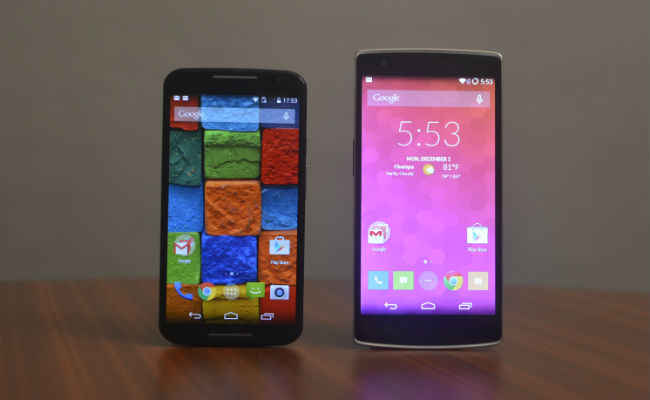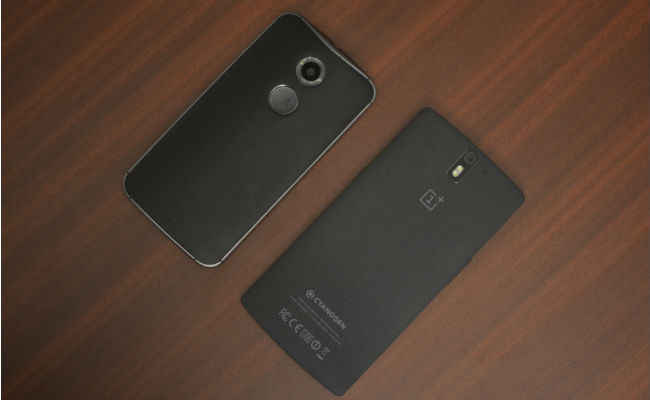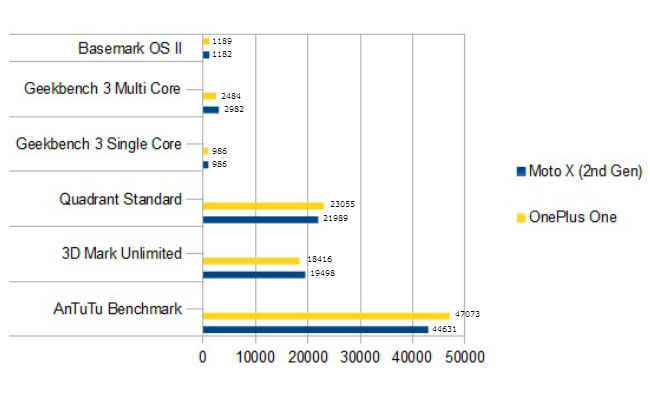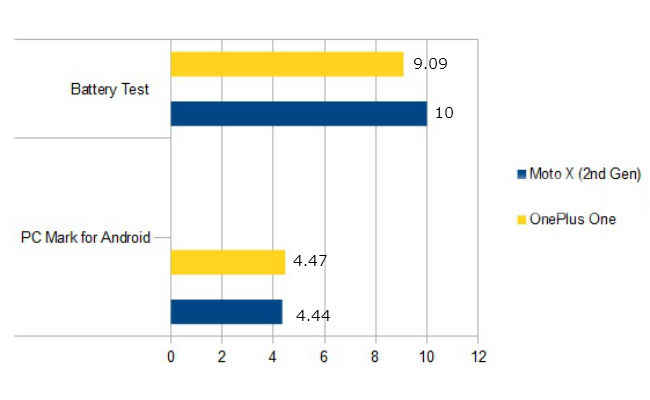OnePlus One vs Moto X (2nd Gen)
The 2014 flagship killer, OnePlus One, goes up against the impressive 2014 flagship, the Moto X (2nd Gen).
When you call your smartphone the 2014 flagship killer, it automatically draws attention. So before you say this comparison is unfair, take that into consideration. After a long wait, the OnePlus One smartphone is finally launching in India tomorrow. Yes, CyanogenMod is not going to support it here, but as we reported earlier, OnePlus is still going to launch the device with Cyanogen, pending a release of its own OS in February 2015. If you’ve been planning to buy the device though, then here’s some perspective that will help you.
We put the OnePlus One against the Moto X (2nd Gen), which is arguably the best performer when it comes to Android smartphones. The idea was to see whether the phone can actually ‘kill’ the Moto X or how close or far it is from doing so. We used benchmarks, camera tests and other regular usage tests in order to figure out the difference. Here’s what we found.
Display
Both the devices have 1080p displays, but while the OnePlus One has an IPS display, the Moto X comes with an AMOLED screen. This is more or less up to personal choice, but it is easy to notice that the Motorola device has a much brighter display.
The AMOLED display of course makes colours warmer, while the IPS display on the OnePlus One is more accurate. As mentioned above, unless the brightness aspect matters to you, it’s basically up to personal choice. We will side with the Moto X on this one, because sunlight visibility is often a concern for us.
Winner: Moto X (2nd Gen)
Form Factor
No comparison. If you like phablets, then the OnePlus One has a pretty good form factor for a 5.5 inch device. If you happen to like more compact smartphones, then the Moto X (2nd Gen) is one of the best that you can find in the market.
Winner: Tie
Performance
This is where the ‘killer’ aspect comes in. You want to be a flagship killer? Perform better than the competitor. Simple. So does the OnePlus One do that? In our tests, the device was just a little behind the Moto X in almost everything. The two smartphones have the same processor in the Qualcomm Snapdragon 801 and also the same GPU.
Motorola though packs in the Mobile Processing System, which seems to be making the difference here. The load on the SoC is comparitively lesser on the Moto X, allowing it to provide better performance output. In synthetic benchmarks, the Moto X was ahead in some, while the OnePlus One had a lead in others even if just by a little. More importantly though, this same effect was reproduced in regular usage, but in the Moto X's favour. Apps take just that extra second to open on the OnePlus One when compared to the Moto X. Games also run just a little better on the Moto X as compared to the competitor. The performance difference isn't nearly enough for anyone to shun the OnePlus One, but we'll go with the Moto X because we have to take the unstability of the CyanogenMod 11S ROM into consideration. The overall difference is very small, but it tips the scales in Motorola's favour.
Winner: Moto X (2nd Gen)
Camera
In our review of this year’s Moto X, you would have noticed that we were really disappointed with the camera. While Motorola went with a 13 MP shooter this time, just like the OnePlus One, it is miles below other flagships. When it comes to flagships, we considered the Moto X’s camera to be at the bottom of the pile. It still remains there, but the OnePlus One somehow made it look better.
OnePlus One Sample Images
Moto X (2nd Gen) Sample Images
Images taken by the two devices showed that while the Moto X does well with colour reproduction and white balance, the OnePlus completely washes out images. There are two areas where the One’s camera is better though — low light and focusing. The Moto X often bungled the focusing on images, while the OnePlus does better with that in comparison. Under low light, the Moto X can hardly pick out subjects, while the OnePlus One, though not the best, still does better than its competitor.
The question here is whether the better low light imaging is enough to make the OnePlus One the winner. Under outdoor conditions and sunlight, the Moto X is the clear winner and the One’s low light imaging, though better, is not really the best. So, we again have to give it to the Moto X.
Winner: Moto X (2nd Gen)
Battery
The battery on the two devices is obviously different, but they're well suited for their respective functions. While the OnePlus One went over nine hours in our battery test, the Moto X gave us an even 10 hours. Using the PC Mark for Android benchmark, the battery life comes out to 4 hours 47 minutes for the OnePlus One and 4 hours 44 minutes for the Moto X (2nd Gen). So, both the devices have this aspect covered quite well.
Winner: Tie
Bottomline
Reading the above, it would seem to you that the OnePlus One loses to the Moto X in a lot of cases. Did we mention the prices though? The Moto X costs Rs. 31,999, while the OnePlus One is expected to be priced at around Rs. 24,000, meaning you save Rs. 8,000 or above on buying this device.
In our opinion, while the 2014 Moto X is the better device, the OnePlus One makes all the sense in the world for those on a tighter budget. The performance of the device is just slightly lower than the Moto X but not enough for the regular user to notice. In addition, with CM soon to be gone, the OS issues should also be solved (hopefully).
We can think of many mid-range devices that would give no competition to the Moto X. The OnePlus One though is a very close competitor and proves that it is worth every penny. On the flipside, it also shows that OnePlus has had to cut some corners to keep the price low. Both the devices are value for money smartphones, but what makes the OnePlus One a really formidable contender is the fact that the 64 GB version of the device will cost below Rs. 24,000. The Moto X on the other hand has only 16 GB of storage, which is a major disadvantage. So, all things considered, you get more bang for your buck with the OnePlus One. Of course, you have to love large screens and you have to forego on speedy updates that Motorola promises.








